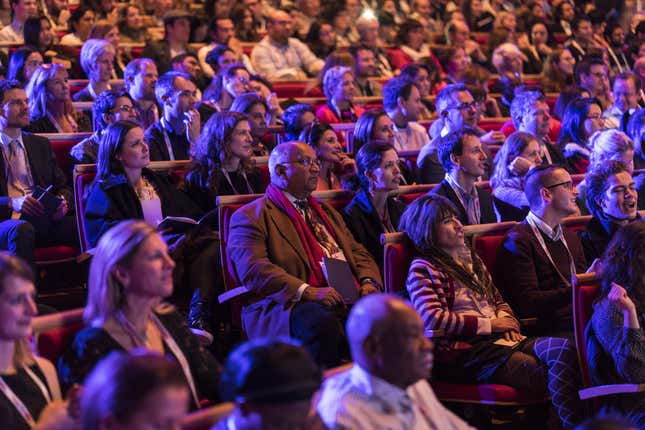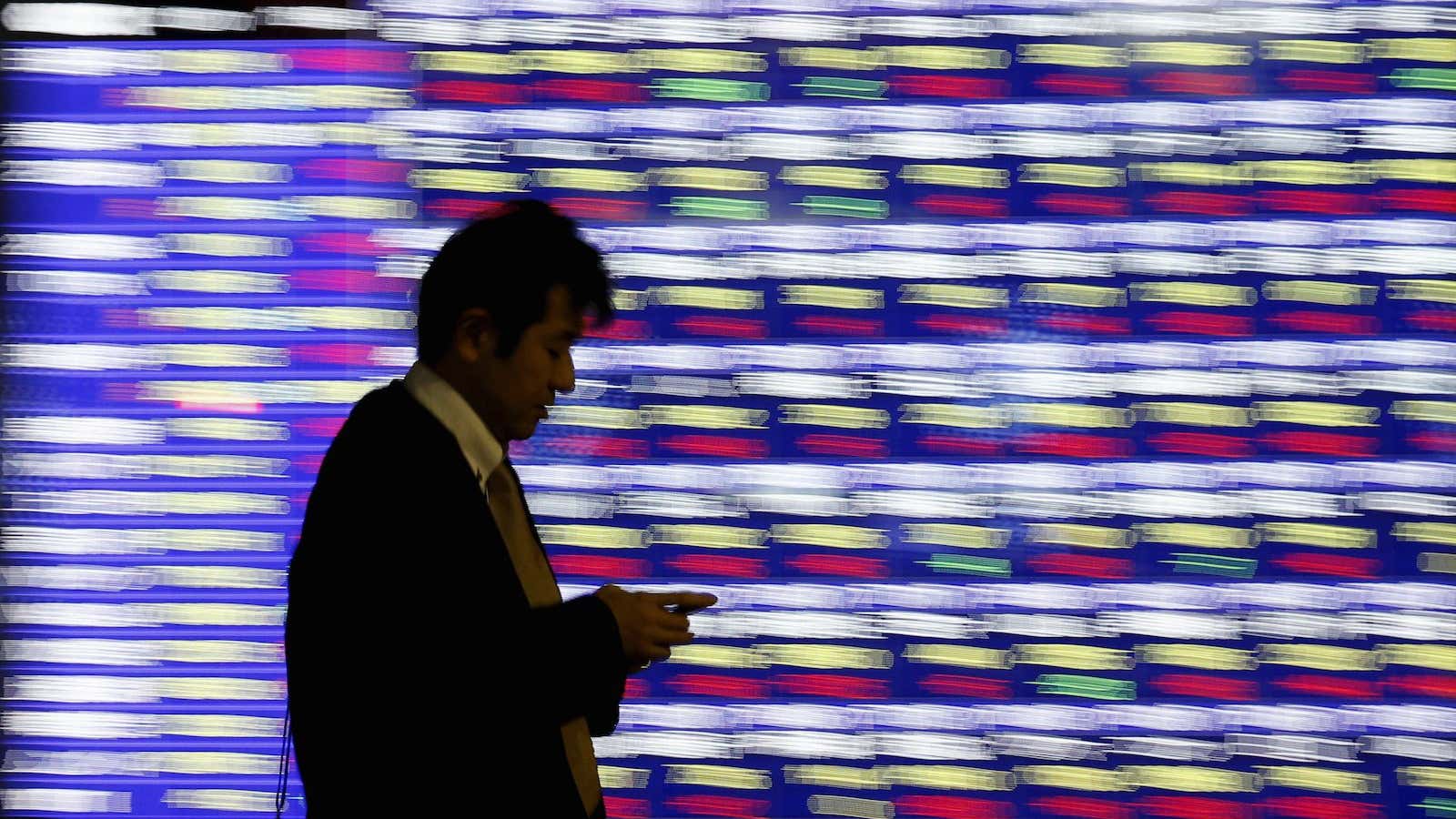Geneva
“No mobile phones, no exceptions,” I was warned at this week’s TEDGlobal conference in Geneva.
It was a radical experiment in the so-called attention economy. One thousand guests had flown in from 80 countries to attend the events company’s Dec. 8 conference in Switzerland. During each two-hour speaker session that day, electronic devices were entirely banned.
TED’s European director and event host Bruno Giussani described the no-device rule as a “counter cultural experiment,” to a packed opera hall. “Do we still know how pay attention—even if the talk gets boring for 10 seconds?” he asked.
Being forced to pay full attention for a few hours at a time may not seem like much of a sacrifice, but attendees were going into it blind: TED kept its 12 speakers secret until the very last minute. When finally revealed, the speaker list included former Greek finance minister Yanis Varoufakis and the UN High Commissioner for Refugees António Guterres. Topics ranged from world economics to the Syrian refugee crisis to computer-aided farming.
The direct connection between presenter and audience—uninterrupted by tweets or email updates—would have been a normal scenario years ago. But in an age where the average person checks their smartphones 85 times a day as a recent study in the UK suggests, powering down mobile connections is a significant ask. The only recording devices allowed for the tech-savvy audience were those of the pen and paper kind.

Mobile devices don’t just distract the person checking their email, explained Giussani in a June editorial for The Guardian—they also distract fellow members of the audience. He wrote, “Letting someone turn on a screen in an audience is akin to giving them permission to degrade, at their sole discretion, the experience of everyone else.”
Rebuilding mental stamina
But rebuilding the ability to sit still and the mental stamina to channel undivided attention is a slog.
TEDGlobal began with a challenge: Listen to an economist deliver a jargon-filled lecture on macroeconomics for the developing world with no images or visual aids. Giussani’s ”10-seconds of boring” seemed to stretch to eternity—the room grew fuzzier and fuzzier until I felt myself powering down, just like my phone.
After being jolted awake by lightly bumping my head (no concussions, just embarrassment) on the rail behind my seat, I looked around to check if I was the only one. As another speaker read his entire speech from a podium, quite a few fellow audience members did appear to be nodding off, but others seemed rapt in attention.
My mind drifted to the Sarte play, “No Exit.” I was grateful for the piece of gum my seatmate offered me. At the end of the first session, the audience mobbed the espresso bar for a necessary caffeine fix. However, the next half of the conference—whose speakers did seem more adept at delivery—was thoroughly enjoyable.
TED has already imposed its no-device rule at two smaller salons held in London this year, and strongly suggested turning off devices at a week-long February conference in Vancouver, Canada. (Vancouver attendees with $8,500 dollars to spare could still skip the main hall, log-on the strong, dedicated wifi and multi-task while (half) listening to talks from simulcast rooms or view talks on TV screens from the fully equipped office facilities on an upper level.)
But at Geneva’s comparatively minimal TEDGlobal Conference, where admission was completely free (by invitation), no such amenities were offered. No discrete side doors from the auditorium, no satellite viewing lounges. And certainly not free internet access.
Your attention’s worth
Since the beginning, paying attention to audience attention spans has always been part of the TED brand. TED caps the length of speakers’ presentations at 18 minutes, which curator Chris Anderson has described as “long enough to be serious and short enough to hold people’s attention.”
TED also invests significant resources in speaker preparation to finesse the delivery, content and pacing of their material. TED’s program also includes musical performances (“Entertainment” is the “E” in TED) and adeptly introduces fun interstitial animations or commercials to reset the mood or refocus the audience after a series of lectures.
Demanding an audience’s undivided attention in person or online requires delivering a steady stream of high-quality, well-executed content. After over 30 years of “ideas worth spreading” and thousands of videos online, TED’s fans come with high expectations and the organization’s continued success depends on meeting it.
At the end of the conference, after a prolonged standing ovation, Guissani remarked, “Thank you for giving us your attention. I hope you felt that we used it well.”
I admit, I was anxious to see if I had missed any messages on my phone. But I was also glad to have been forced to pay attention to, well, my own waning attention span.




